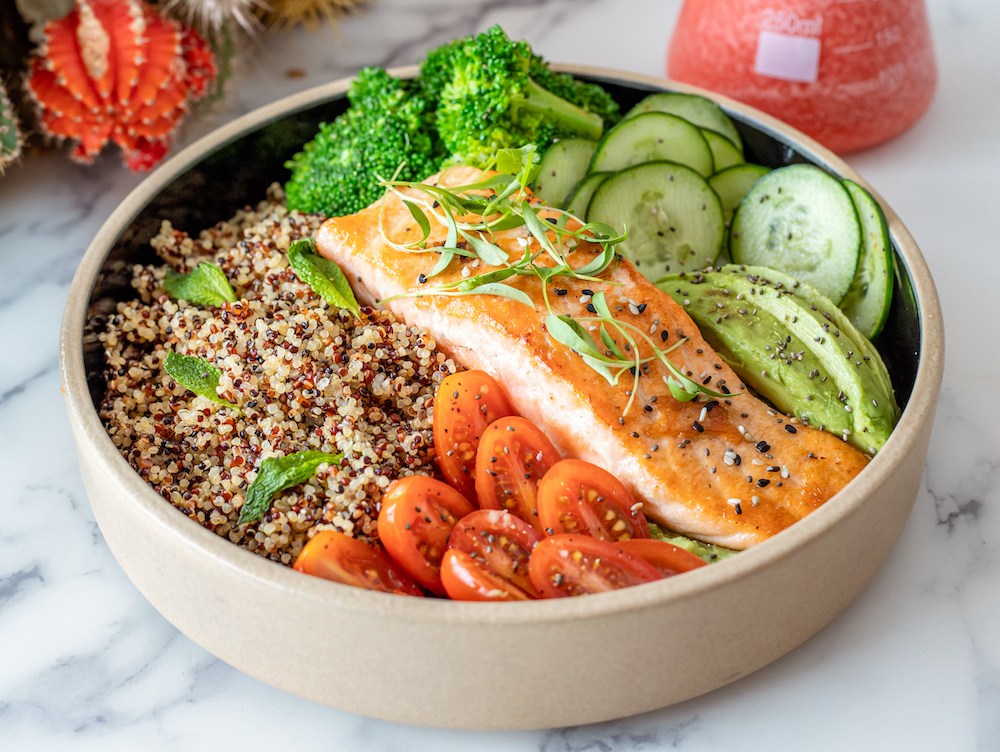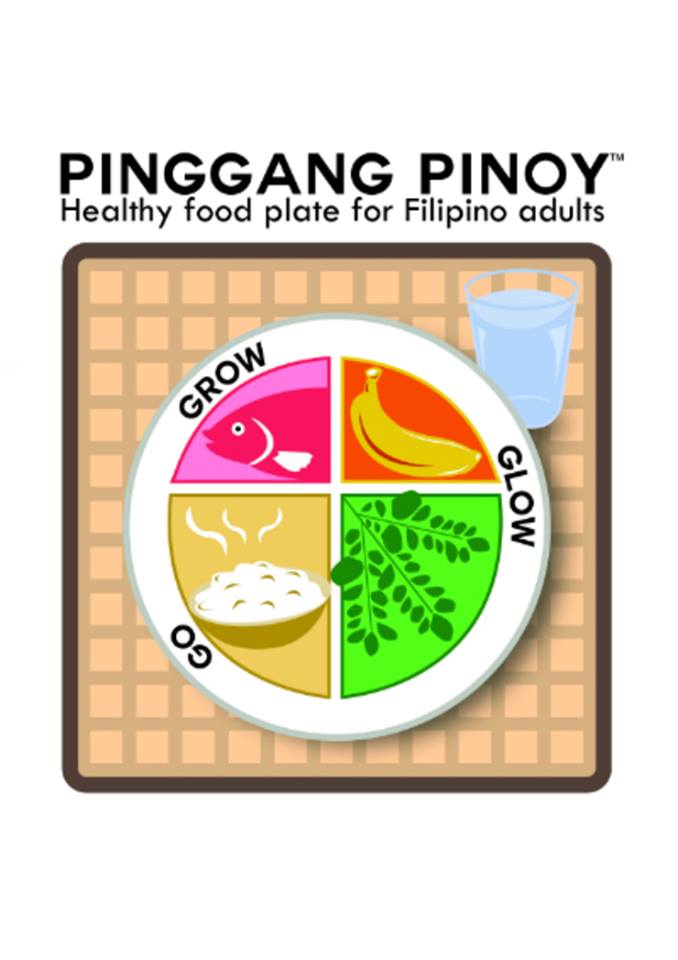Healthy eating seems to be such a complicated idea these days. With many different sources and voices telling us how to eat, it can definitely be all too confusing. We should remember though that nutrition is a science and just like medical information, it’s not something we should depend on Google or Youtube with. Always choose credible sources especially when it involves your health.
However, healthy eating doesn’t necessarily have to be too complicated. There are simple steps or principles we can keep in mind to get on the right track and it starts with the basics. We can never go wrong with the basics just as every house or building needs to have a good, solid foundation.
One of the things I teach my clients during our first session is the 4 Basic Principles in Healthy Eating, represented by the acronym MOVABA, which is expounded as Moderation, Variety, Balance, and Adequacy.
Moderation

“Everything in moderation.” Just reading and hearing that sounds liberating, doesn’t it? Healthy eating doesn’t have to be restrictive. We can still enjoy our favorite foods, in moderation! After all, there’s nothing wrong with enjoying life, and food is definitely a huge part of our lives considering the fact that it’s something we do every day and throughout our lifetime.
Do remember though that too much of anything is never good for us, and that goes for even the “healthiest” foods. Take for example chia seeds. People sprinkle this or add it to almost every dish they have, thinking it’s healthy. But taking more than two tablespoons of chia seeds a day can also be too much and may contribute to excess overall calorie intake. This might keep you from losing weight if that’s your goal.
So what exactly do we mean by “in moderation”? It’s important for us to familiarize ourselves with the single servings of the different food groups we eat—starchy carbs, fruits, vegetables, protein, fats, and oils. It’s also vital to check the serving size written on the nutrition facts of packaged food items. Otherwise, how would we know if we’ve had too much when we don’t even know how much is enough, right?
Surprisingly, this is something we aren’t taught in school, so it’s best to take initiative and check Google for this. It’s not rocket science, it’s just basic information we can trust Google with.
Variety
This aspect of our diet is one that is often forgotten or taken for granted. Some people think it’s fine to eat the same food or meal throughout the week, i.e. having a smoothie or peanut butter toast every morning. But, remember, there is no single food that contains all the nutrients we need. Just because a certain dish is healthy doesn’t mean that it’s the only dish that we should eat all day or all week. Our body thrives on diversity just as society does.
God always has a good purpose for everything, even in the littlest details as in the different colors our fruits and vegetables come in.
The compounds that actually give fruits and vegetables their colors as well as their distinct tastes and aromas are called phytonutrients. These are special components of our fruits and vegetables that provide us with an extra health boost. These vitamins and minerals we get through phytonutrients work as antioxidants to protect us from cancer and keep our immune system robust. Each color presents its own unique set of phytonutrients and corresponding benefits. This is why we now often hear the recommendation to “Eat the rainbow,” which encourages us to eat as many colorful foods as possible.
And variety is not only encouraged in our fruit and vegetable intake but as well as in our starch and protein choices too. It’s just a matter of alternating our choices, i.e. not having chicken, rice, or pork too frequently. We have many options to choose from if you just think about it with enough intent. Generally, it’s most beneficial to get a diverse nutritional profile from as wide a variety of food choices as possible.
Balance

The common Filipino diet consists only of rice and a viand, also known as the “rice-ulam diet”. It is no surprise then that many Filipinos have iron-deficiency anemia and other micronutrient deficiencies1 because the most important part of the meal which provides us the bulk of the micronutrients we need daily—fruits and vegetables or “glow foods”—isn’t included in our diet.
To have a balanced meal, the National Nutrition Council has created the Pinggang Pinoy model to illustrate how our meals ought to look and to serve as an easy guide to remember.2 Basically, it shows us that the three main food groups—Go (energy food/starchy carbs), Grow (protein, either animal or plant-based), and Glow (fruits and vegetables)—should be present during every meal.
Their corresponding proportions on our plate are also illustrated, with the Glow foods being half of our plate and the Go and Grow foods consisting of a quarter portion each. Following this guide will help ensure that we are getting the minimum amount of nutrients we need every day.
Adequacy
Eating healthy is not about eating as little as possible, but rather it’s about eating right.
We normally don’t let our gadgets and devices run low on battery, so we should do the same with our bodies. The best thing to do is to consult with a nutritionist on how many calories you would specifically need per day. You can use a calculator from websites online, but the most credible way to know how many calories you need would be from your nutritionist. They would most likely be using local computation standards to account for factors such as ethnicity. A proper assessment will also be done so you get what’s most appropriate for you. According to the UK NHS, sedentary females would need 2,000 calories/day while males would need 2,500 calories/day.3
These are the principles I’ve lived by since I learned them, and it’s honestly helped me maintain a healthy weight since I graduated from college (that’s almost a decade now). Those who know me know that I love to eat, and applying these principles is definitely a worry-free way of eating healthy which helps keep a healthy relationship with food and your body.
“Eat to thrive, not just to survive!”
REFERENCES
- DOST-FNRI. Expanded National Nutrition Survey. http://enutrition.fnri.dost.gov.ph/site/uploads/2019%20ENNS%20Results%20Dissemination_Overview.pdf
- “Pinggang Pinoy” from https://www.fnri.dost.gov.ph/images/sources/PinggangPinoy-Adult.pdf and https://www.fnri.dost.gov.ph/index.php/116-pinggang-pinoy
- https://www.webmd.com/diet/features/estimated-calorie-requirement
- https://www.nhs.uk/common-health-questions/food-and-diet/what-should-my-daily-intake-of-calories-be
- https://www.rdasia.com/healthsmart/diet/equation-proves-how-many-calories-you-should-be-eating






